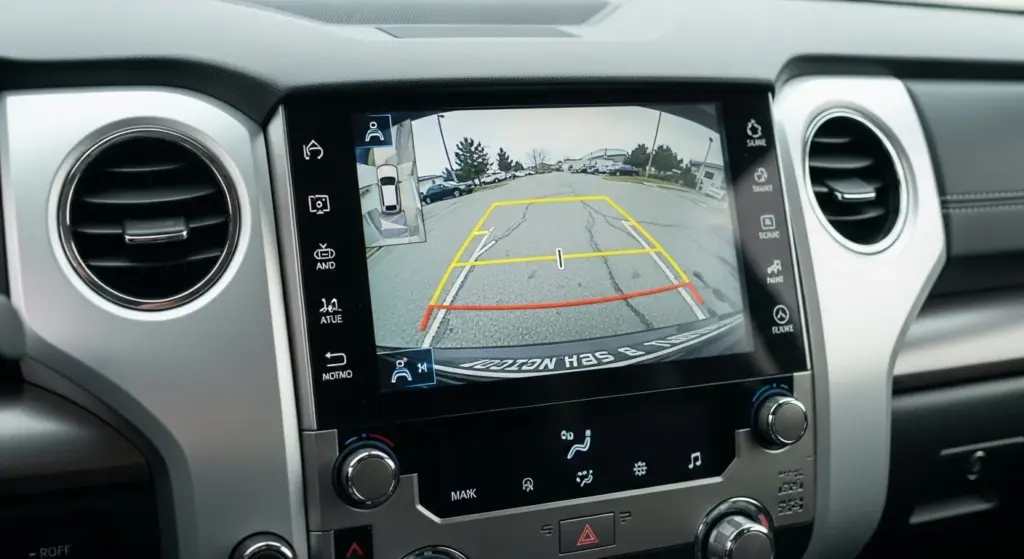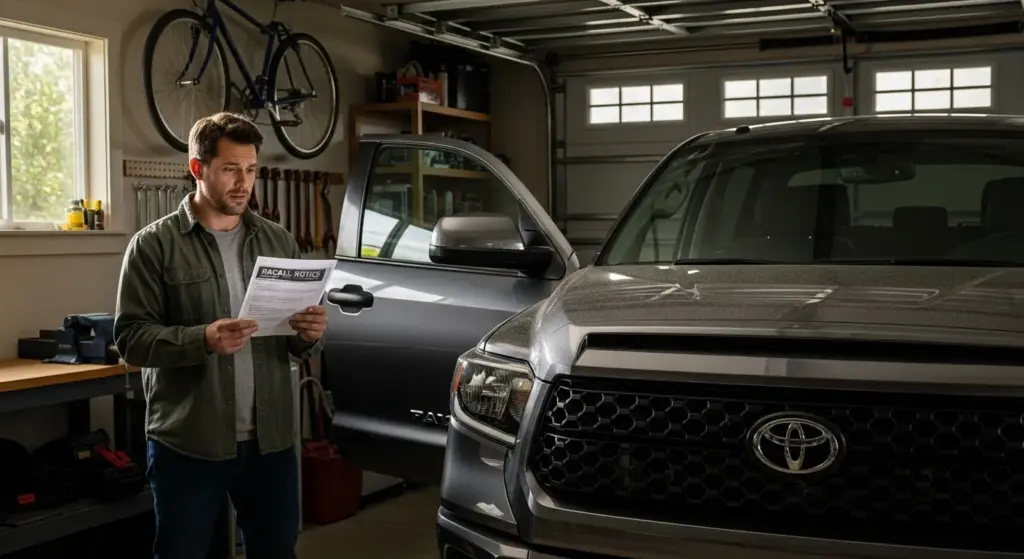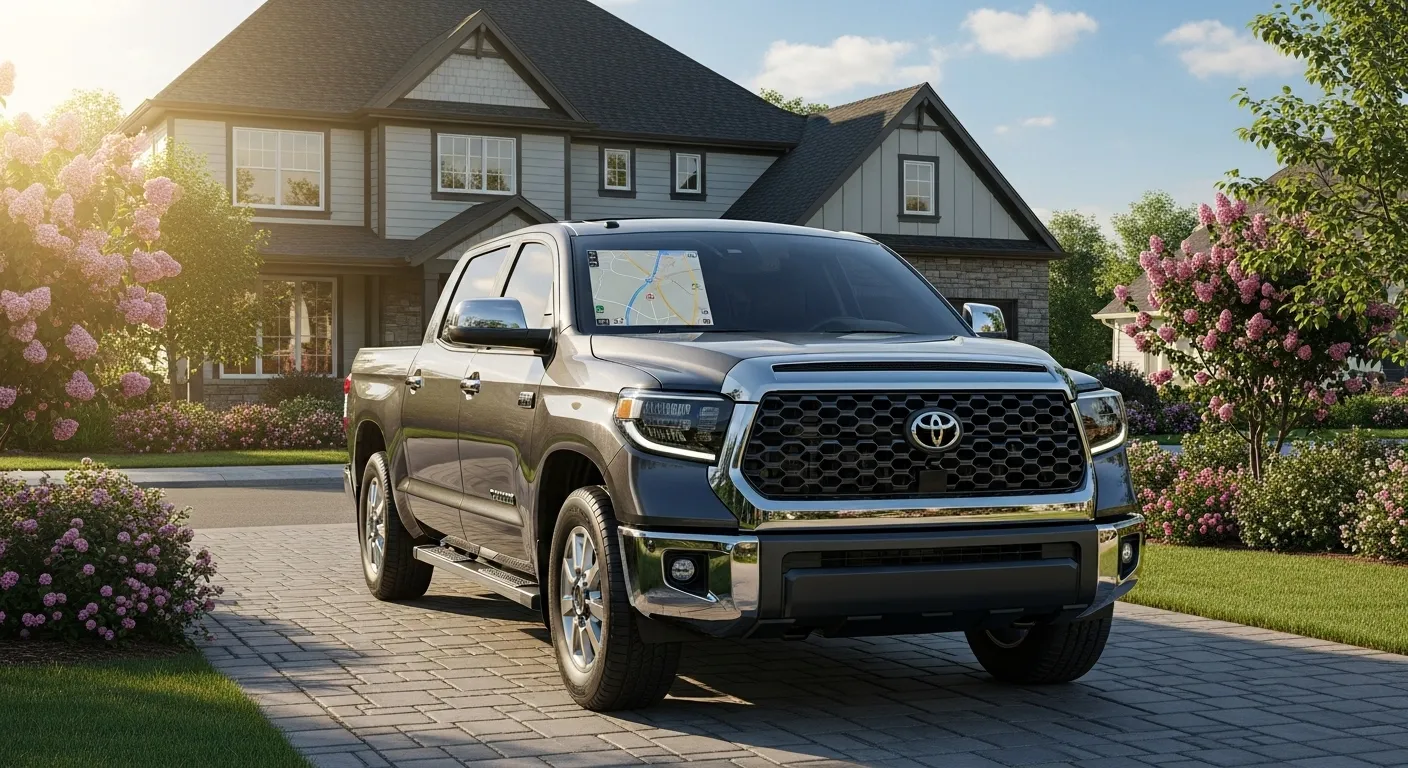In a landscape where software updates and high-definition displays are expected in modern trucks, a recall over a mere “camera glitch” may sound trivial. But for U.S. pickup owners—especially in full-size trucks like the Toyota Tundra—such a fault can threaten safety, trust, and resale value. For many buyers, the Tundra is a workhorse, a weekend warrior, or a family hauler. Knowing your rearview camera might go dark is a big deal.
This recall arrives as the broader U.S. auto market contends with increased regulatory scrutiny, rising expectations for vehicle tech reliability, and intense competition from rivals who tout robust connectivity and safety systems. In the age of over-the-air (OTA) fixes and smartphone-style updates, even an interruption in viewing your rear camera feels out of step.
So when Toyota just announced a recall affecting 2022–2025 Tundra and Tundra Hybrid models (and certain Sequoia hybrids) over a rearview camera display software bug, it became headline news. Let’s unpack what’s behind this, how it’s being addressed, and whether you should worry—or act now.
The Recall Unpacked: What’s Going Wrong

Toyota’s formal recall notice (campaign numbers 25TB10 / 25TA10) indicates that the software controlling the 14-inch multimedia display may cause the rearview camera feed to go “half green, full green, or full black” when in reverse. In other words: no usable image when backing up.
Please take a look at this post as well: Norton’s Comeback: What TVS’s $200M Investment Means for U.S. Riders
From the NHTSA and Toyota’s statements:
- The defect can violate federal safety standards around rear visibility (FMVSS No. 111).
- This is classified as a noncompliance recall, which means Toyota believes the vehicles might not comply with federal rules.
- Dealers will apply a free software update that restores proper display behavior.
- Toyota plans to mail notification letters to affected owners starting November 16, 2025.
The scale is significant: approximately 393,838 vehicles are impacted, with non-hybrid Tundra models making up a large share.
Real-world risk: When the camera fails, you lose essential visibility of obstacles, small children, or objects behind the truck. That can lead to close calls or worse.
Specs & System Impact: The Multimedia Display
While the recall is about software, the system hardware environment gives context. The key spec at fault is the 14-inch multimedia display unit that governs the rear camera feed.
Here’s a quick table for clarity:
| System / Component | Detail |
|---|---|
| Display | 14-inch multimedia center screen |
| Function in Fault | May show half green, full green, black screen when reversing |
| Affected Model Years | 2022–2025 Tundra / Tundra Hybrid; 2023–2025 Sequoia Hybrid |
| Fix Approach | Dealer software update (free) |
| Notification Start | November 16, 2025 |
Impact in everyday use: On the highway, this issue may never surface. But in tight parking lots, backing out of driveways, or navigating tight trails, losing your rearview feed is unnerving. For drivers used to relying on camera assistance to avoid blind-spot backovers, it’s a sudden regression. Owners will want the fix before using trailers, backing up in busy lots, or in tight residential zones.
Please take a look at this post as well: Aprilia RSV4 X-GP Unveiled: The Closest You’ll Get to a MotoGP Bike

How This Compares: Evolution & Rival Context
When thinking of software recalls, Toyota’s isn’t alone. For example, earlier in 2025, Ford recalled over 1 million vehicles across its Bronco, F-150, Escape, and other lines due to a software issue that caused rearview cameras to freeze or display blank. That shows even giant OEMs are grappling with camera software reliability.
Comparing to earlier Tundra or rival trucks:
- Past Tundra models (pre-2022) often had simpler camera/display systems less tightly integrated.
- Rivals like Ford, GM, Ram are pushing over-the-air updates and OTA capability to reduce reliance on dealership visits—something Toyota might accelerate.
- Electric truck challengers (e.g. Rivian, Tesla Cybertruck) assume constant software fixes; this recall underlines why consumers expect solid over-the-air patching pipelines, not reactive recalls.
For owners of 2022–2025 Tundra, the recall serves as a reminder that the software era brings new failure modes. It’s not about engine or frame—it’s about code integrity.
What Affected Owners Should Do Now
- Check your VIN: Use Toyota’s or NHTSA’s recall lookup tools to see if your vehicle is part of campaign 25TB10 / 25TA10.
- Wait for the notice: Toyota begins mailing notices November 16, 2025.
- Schedule a dealer visit: Once notified, visit your Toyota dealer to get the free software update.
- Ask about OTA: If your Tundra supports over-the-air updates, ask if the fix can be applied remotely. (Toyota hasn’t explicitly said OTA is available for this recall.)
- Exercise caution: Until your vehicle is fixed, back up slowly, use mirrors and sensors, and avoid high-risk reverse maneuvers.
Owners may also call Toyota’s Brand Engagement Center at 1-800-331-4331 or the NHTSA vehicle safety hotline at 1-888-327-4236.
This recall comes on the heels of prior Tundra recalls earlier in 2025 (for reverse light malfunctions).If Toyota’s patching cadence accelerates, future software updates might come proactively rather than retroactively.
Please take a look at this post as well: 2025 Harley-Davidson Pan America 1250 Special: 5 Smart Tech Upgrades You Can’t Miss
Should You Still Buy a 2025 Tundra Now?
If you’re in the market for a new or near-new Tundra, this recall is not a dealbreaker—because the remedy is straightforward and free. But it does highlight a few things to watch:
- Strengths: Tundra remains rugged, capable, and well-integrated in off-road and towing scenarios. The recall itself shows Toyota is responsive when issues arise.
- Weaknesses: Software complexity brings new risks. Buyers should enquire about software versioning, update policies, and recall history.
- Best use cases: For daily drivers, contractors, outdoors enthusiasts, or weekend adventurers, a patched Tundra remains hard to beat. But if you expect long-term autonomy or OTA patching, ensure the model you choose is as future-proof as possible.
If you own a 2022–2025 Tundra, schedule the fix when available and continue to back cautiously until then. If you’re shopping, insist on reading the software disclosure, and ask dealers about recall status.
In short: the Toyota Tundra recall over rearview camera software is a technical headwind in an era of smart trucks—but Toyota’s free fix and quick response make this more of a speed bump than a full stop. Stay informed, patch your vehicle, and you can keep enjoying the torque, capability, and confidence that the Tundra offers.
